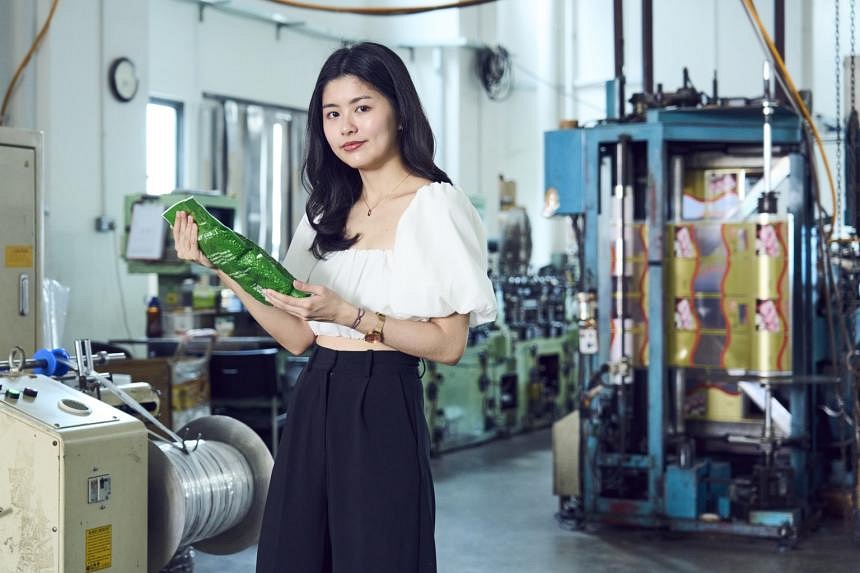
Most food packaging used today is difficult and expensive to recycle, she shares. For example, frozen food packaging uses two different layers of plastics that must be separated before it can be recycled.
These are typically nylon and low-density polyethylene (PE) that are laminated together to prevent oxygen and water vapour from seeping into the pack and spoiling the food.
While pure PE packaging materials are available on the market and are easier to recycle, they are rarely used for food products as they do not offer the same kind of protective barrier.
Tobe’s breakthrough was to create a pure PE material that could be applied with a recyclable barrier coating. It experimented with different combinations of PE resins for about eight months in 2021 to create a suitable material, before partnering with local firm Aegis Packaging which developed and supplied the coating.
Tests showed that Ecolefin’s oxygen barrier property is nearly eight times better than that of conventional nylon-based packaging. This means that food packaged with Ecolefin will have a longer shelf life. The firm is currently conducting laboratory and sample tests to determine how long the material can prolong the shelf life of different food products.
Ecolefin is already making progress. In August last year, the Institute cyclos-HTP in Germany – one of Europe’s leading and most recognised organisations for recyclability testing and certification – certified Ecolefin as 97 per cent recyclable.
Since Tobe introduced its creation at the international FHA-Food & Beverage trade exhibition held in Singapore last September, it has sparked interest from multinational food companies around the world, including in South Korea, Finland and the United States.
It is also partnering Freshening, a local manufacturer of wet wipes and disinfectants, to commercialise a product with the packaging material by the end of this year, widening its range of uses beyond food.
Ms Lim adds that Tobe is working on further improving the material, with plans to invest in a specialised coating machine.
“With the machine, we can apply the barrier coating more effectively. We also want to design more packaging options such as stand-up pouches, and tweak the material’s formula to better suit different products, such as snack packages that must be easier to tear,” she says.
Bagikan Berita Ini














0 Response to "How this local SME is helping to keep your snacks fresh while reducing plastic waste - The Straits Times"
Post a Comment